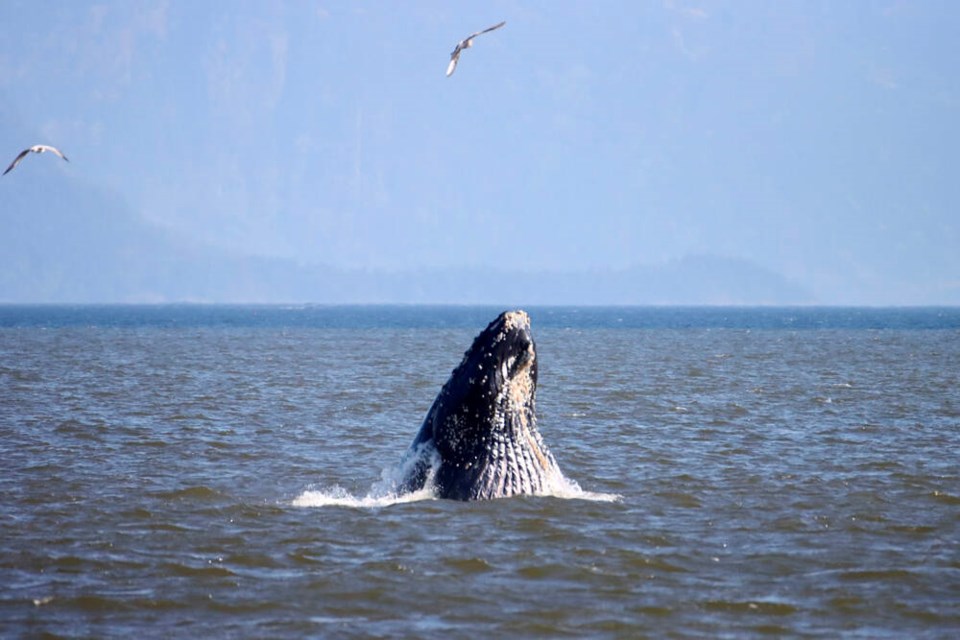There’s a young humpback whale gorging himself on a smorgasbord of anchovies in Howe Sound off West Vancouver.
Humpbacks have made their annual migration home from the waters off Hawaii and Mexico, and they’re hungry.
Malachite, as he’s known among biologists and whale spotters, has been “lunge feeding” around Passage Island since Sunday.
Humpbacks can sense schools of smaller fish in the waters around them using bone-like “tubercles” on their skin before opening their gaping maws and swimming straight for the forage fish.
“He catches almost the entire school of fish in one mouthful and then he closes his mouth and uses his tongue and some muscles in his throat to push all the water back out,” said Tobin Sparling, a UBC biology grad and citizen scientist who has been documenting Malachite’s activities. “He keeps doing that until he’s happy and he’s going to keep doing that pretty much every day until about October, when he’s going to go back to either Hawaii or Mexico.”
Not a lot is known about Malachite but, according to happywhale.com, he was born in 2021 and since then he’s been spotted between Sechelt and Tacoma, Wash.
Humback whales threatened but recovering
Humpback whales are considered a “threatened” species, but the local population has been showing signs of recovery in recent years, going from just 300 known whales a few years ago to 802 last year. Frequently, females that have given birth in the Pacific will pick up “escorts” as they return to the West Coast, Sparling said.
“So we are seeing a nice recovery,” Sparling said. “But it’s still lower than it should be.”
Species of all types have been coming back to Howe Sound as the body of water has been recovering from its time as a toxic soup of mine tailings.
Boaters must slow down
The more whales there are in local waters though, the more likely it is that humans in boats will harm them, Sparling said.
It means anyone on the water, from freighter captains to kayakers, needs to be hyper aware that whales are present and give them some space. This is especially so for southern resident killer whales, which are critically endangered.
The presence of a whale watching boat should be an immediate sign to ease off the prop, Sparling said.
Under the law, boaters must stay at least 100 metres from whales, or 200 metres if there is a mother and calf.
“The further away you are, the better,” said Sparling, who has reported numerous vessels running afoul of the rules. “Whales are aware to some extent that there are boats going by, but sometimes these big lumbering humpbacks aren’t quite quick enough to avoid them and strikes do happen.”
Anyone who spots a whale should immediately report it to the BC Cetacean Sightings Network at report.wildwhales.org or via the WhaleReport smartphone app.
That information is automatically shared not just with researchers trying to keep an eye on whales, but also with the marine industry so those at the helm know to slow down or change course.
Although Sparling’s specialty is microbes, which are a fair bit smaller than Malachite, he works as a whale watching guide because he said it allows him to spread awareness about their conservation needs, he said.
“Humpbacks are beautiful and should be enjoyed either on the water from a distance or on shore,” he said.
You can find Sparling’s citizen science videos about microbes on tiktok.com/@microbin_




